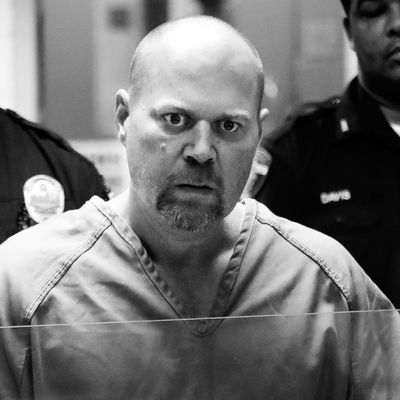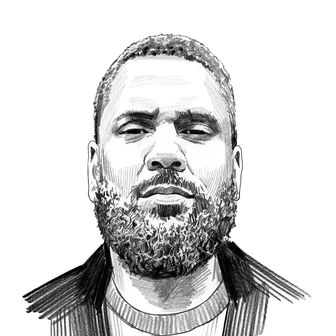
Two black senior citizens were murdered in Louisville, Kentucky, on Thursday. Maurice Stallard, 69, was at a Kroger supermarket when Gregory Bush, a 51-year-old white man, walked in and shot him multiple times. Bush then exited the store and shot Vickie Lee Jones, 67, in the parking lot before an armed bystander reportedly fired back, prompting him to flee. Police were unable to confirm accounts that Bush encountered a second armed man, who engaged him in a brief standoff where no shots were fired, according to the New York Times. “Don’t shoot me and I won’t shoot you,” the man’s son, Steve Zinninger, claimed Bush told his father. “Whites don’t kill whites.” Police apprehended Bush minutes later.
Bush had no known connection to either of his victims. Any doubt of a racial motive seemed quelled when surveillance footage showed the shooter forcibly tried to enter a black church minutes before moving on to the supermarket. The Times reports that a member of the 185-year-old First Baptist Church of Jeffersontown grew alarmed when she saw Bush yanking “aggressively” at its locked front doors. Up to ten people were inside the chapel following a midweek service. “I’m just thankful that all of our doors and security was in place,” church administrator Billy Williams said.
The murder of black seniors is a relatively rare phenomenon in the U.S. People over 65 accounted for just 2 percent of black homicide victims in 2014, according to a 2017 Violence Policy Center report, citing that year as the most recent for which data was available. Yet they have been central victims in recent racist killings. From Charleston to New York City and, now, possibly Louisville, some of the 21st century’s most notorious white supremacists have targeted black seniors for violent deaths. The unique cruelty of this pattern magnifies its obvious illogic, demonstrating yet again that white rhetoric framing black people as threats is shallow cover for terrorizing the vulnerable.
It also casts harsh light on the canards used to deflect reckoning with racist violence among partisan pundits. Arguments that police brutality claims are overblown, and that “black-on-black crime” is the more pressing issue, can make interracial violence a tough sell as worthy of national attention — if mostly for conservatives seeking to avoid confronting racism altogether. Yet their reasoning rarely cuts both ways. Terrorist attacks by Muslim refugees have not happened in the U.S., yet their specter fueled President Donald Trump’s election. Violent crime committed by undocumented immigrants is rare, but as a rhetorical device, it is among the central Republican wedge issues of the upcoming midterm elections.
The reality is that there has long been a tacit understanding in America that some forms of violence are more morally objectionable than others, regardless of their frequency. That this understanding is often weaponized to promote xenophobia and white supremacy belies that it also has appropriate applications. Black Americans have been targeted for centuries of enslavement and racial violence. Black people in their 60s are among the last generation who lived through and remember Jim Crow. Maurice Stallard was about five years old when Brown v. Board of Education was decided and a teenager when the Voting Rights Act passed in 1965. Vickie Lee Jones was five when the Montgomery Bus Boycotts ended. She was close to 13 when white terrorists in Birmingham, Alabama, murdered four little black girls in a church.
If anything constitutes a uniquely repugnant act of violence, white racists murdering black Americans who endured the 20th century’s banner period of white racist violence in the U.S. and lived to tell of it qualifies. Yet we continue to see it unfold — and remarkably, often justified using the rhetoric of defense. “Y’all are raping our white women. Y’all are taking over the world,” shouted Dylann Roof as he massacred nine black people at a church in Charleston, South Carolina, in 2015. White supremacist James Jackson, who initially hoped to kill “younger [black] guys” who “put white girls on the wrong path,” settled for stabbing Timothy Caughman to death with a sword in New York City in 2017. “The white race is being eroded,” he later said.
Caughman was 66 when he was killed. Ethel Lee Lance was 70, Daniel Simmons was 74, and Susie Jackson was 87 when Roof murdered them in purported defense of his race. At 69 and 67, respectively, Stallard and Jones are the latest to join their cohort. And their number could have easily been larger. Had Bush succeeded in breaking into the church — a place of black worship, black community, and at its best, black sanctuary — more potential victims awaited. White violence against black people has always been about power, first and foremost, and rationalized by invoking fabricated threats. But the wholesale massacre of unsuspecting black senior citizens better reflects its true rationale. Terrorism is most effective when it targets those least able to fight back.






























